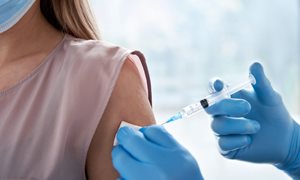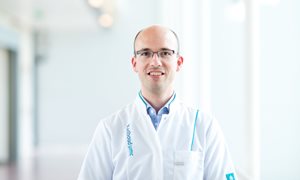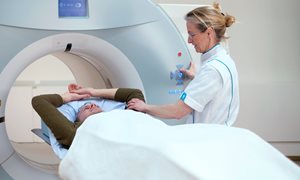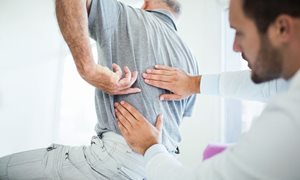.jpg.aspx?width=500&height=333&ext=.jpg&type=BlockColumn1Zoom1)
Two years ago, Maartje Bijl was the first person in the Netherlands to receive two new hands at the Radboudumc. A major challenge in such an operation is the preservation of the donated tissues. Plastic surgeon in training Anne Sophie Kruit will receive her doctorate on September 24 on the development of a new preservation technique that makes hands last at least three times as long. Her work also contributed to Maartje's surgery.
Maartje Bijl (46) can write and hold the stair railing again. She lost both her hands and feet in 2014 after a bacterial infection. Two years ago, she received two new hands from a donor at Radboudumc. The new hands felt instantly familiar. After a long rehabilitation, Maartje can now live independently again.
An operation like Maartje's is an enormous challenge. The surgeons practiced extensively on arms of people who make their bodies available to science. They also printed special molds with a 3D printer. This could be prepared in peace. But when the call came about available donor arms, everyone immediately shifted into top gear. Although transplants in American hospital series always go just right thanks to the clever steering of the paramedic and the sprinting of the athletic doctor, in practice things sometimes go wrong.
Melting ice
"It's a battle against time," says Anne Sophie Kruit, plastic surgeon in training at the Radboudumc. "The standard procedure is still cooling on melting ice. A piece of skin remains usable for transplantation for about twenty-four hours, but tissues that contain muscle quickly suffer damage. Muscles need a lot of oxygen and nutrients and are therefore more likely to be damaged. On ice, tissue containing muscle only lasts about 6 hours."
That's very short for a hand transplant. Maartje's entire operation took 24 hours, with the attachment of one hand taking almost 6 hours and the other even 9 hours. And then the donor hands also have to travel from donor to recipient. "The longer it takes for an organ to be attached, the less likely it is that a transplantation will be successful. The damage that occurs in the tissue during preservation also increases the chance of rejection. The procedure is very intense for a patient and you want to minimize the chance of rejection."
Energy drink
Anne Sophie conducted PhD research on a new preservation technique and shows that muscles and limbs can be preserved for at least 18 hours, a huge gain compared to 6 hours on ice. In this technique, doctors connect donor organs or limbs to a modified mini heart-lung machine immediately after removal. This pumps a special preserving fluid through the tissue, a kind of energy drink with oxygen and nutrients. This technique is already the standard for liver and kidney transplantation, but using it on limbs required many modifications.
The mini heart-lung machine has not yet been used in Maartje's surgery, but the storage fluid has. "It was too exciting two years ago to combine the first double hand transplant with the new preservation technique. But in the future we definitely want to use the machine. We want to move towards a handy device on a trolley cart, which, in terms of size, can also be taken along in the ambulance."
Good condition
Supervisor Professor Dietmar Ulrich, head of the Department of Plastic Surgery, sees a bright future for the technique of flushing with the mini heart-lung machine: "This technique will change the world of plastic surgery. Previously we had to transplant within 6 hours, but now we have 18 hours. I expect that connecting limbs to the mini heart-lung machine will be the standard technique for transplants worldwide in 10 years."
In addition, Ulrich sees other applications for the technique: "Think, for example, of someone who loses a leg in an accident. Sometimes you can't put that leg back immediately because the person is not fit enough for a lengthy operation. But a day later it might work. Then it is very nice if that leg remains in good condition. The technique can also be useful if you are moving tissues within a patient, for instance in a breast reconstruction from abdominal tissue. With complications such as clot formation, this technique gives more time to resolve that first before moving on."
In the media
On September 17, Maartje Bijl tells her story together with her treating surgeon Steven Hovius at the NOS on radio 1 and in the NOS news.
Symposium
On September 23, the Department of Plastic Surgery of the Radboudumc organizes a symposium on the preservation and transplantation of tissues and organs. The program includes international speakers and a review of the double hand transplantation together with Maartje Bijl. More information and registration via this website.
Thesis defense
On September 24 at 12.30 Anne Sophie Kruit defends her dissertation titled 'Extracorporeal perfusion for prolonged preservation of muscle flaps and limbs'. The live stream can be followed via this link.
-
Want to know more about these subjects? Click on the buttons below for more news.
More information
Annemarie Eek

wetenschapsvoorlichter
Related news items






